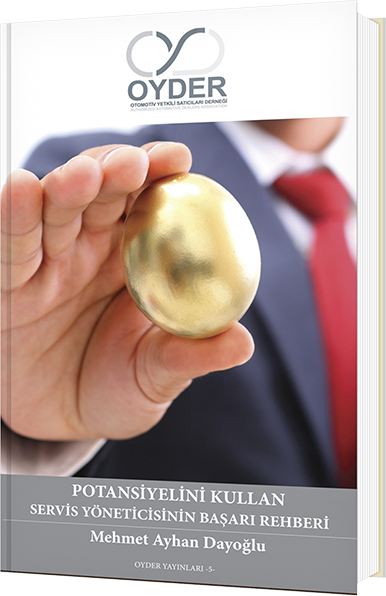Monday, 30 January 2006 22:25
Effect of Stock Turnover Coefficient on Successful Operation
There are three operations performed within companies: Manufacturing (goods and/or service), marketing and finance. Wealth is achieved by means of successful and effective management of aforementioned basic three operations within global economies. And for successful and effective management of basic operations, right decisions should be taken in terms of process, quality, capacity and stock management.
Stocks are generally the largest assets of a company. Stocks should closely and strictly followed in order to ensure the stocks to be consisted of active products and necessary measures should be taken to sell less active products immediately for a successful operation performance.
Stocks are generally the largest assets of a company. Stocks should closely and strictly followed in order to ensure the stocks to be consisted of active products and necessary measures should be taken to sell less active products immediately for a successful operation performance.
Movement of stock is determined by calculation of “Stock Turnover Coefficient (STC)”. While calculation of STC, stock month value is calculated at first. Stock month indicates how many months it will take to finish the stock . STC is stock month value of a period of 12 months and calculated according to following formula:
Average cost of last 12-months-period stock amount
Stock Month = ------------------------------------------------------------------------- (month) I
Average cost of products sold within last 12 months period
Stock Month = ------------------------------------------------------------------------- (month) I
Average cost of products sold within last 12 months period
12
Stock Turnover Coefficient = ----------- (time) II
Stock Month
The following points should be taken into account while STC is calculated:
1.) The products which are kept in the stock should be taken into account. However, the movement of products, which are not kept within the stock as a result of a strategy, should not be taken into account. In addition, the products, which are usually sent to the customers directly by manufacturers although they do not be kept within the stock, should be excluded while calculation of STC.
2.) All products (e.g. for cleaning, maintenance, warranty etc) which are not sold but used within the company, should be taken into account since those products are kept within the stock to be used within the company and they also increase the total stock value.
3.) All values to be used within accounts should be on cost basis.
Constant increase in STC is a must for a successful operation. As long as STC is increased, both amount employed on stock shall decrease and also profit on sales shall rise as well. For instance, let’s assume that monthly average stock amount within last 12-mont-period of ABC is 50.000 TL whereas monthly average cost of the products sold within last 12-month-period is 25.000 TL. ABC, shall have two months stock in hand according to the following calculation:
50.000
Stock Month = ---------------- = 2 months
25.000
In other words, stock turnover coefficint of ABC is six times.
12
STC = --------- = 6 times
2
If ABC increases the total average amount of the products sold within last 12-months-period to the level of 100.000 TL, stock monthh value shall be fifteen days
50.000
Stock Month = ----------------- = 0,5 month
100.000
whereas stock turnover coefficient shall be twentyfour times.
12
STC = ------------ = 24 times
0,5
As the example above shows, in case cost of sold product increases whereas stock amount is pegged, in other words , if the total price of the products taken out of the stock rises, STC will rise as well. In this case, return on source employed on stock shall increase too. If it is not possible to increase the cost of sold product, the next point to be focused on shall be reduction of amount employed on stock, because, STC will rise when amount employed on stock is reduced.
Stocks should closely be followed in order to increase STC. The following points should be focused on:
1.) The products with similar specifications shall be categorized together. STC shall be individually calculated for each category. STC is a common indicator for whole stock in general. Nevertheless, each product category, even each product in stock has its own STC. STC shall be differantiated according to the products supply process. If product supply process is long, if there are fluctations within product supply process of manufacturer, if delivery and shipment periods are not same, if there are instant and immediate changes in sales; safety stock level of relevant product will be higher, which causes an increase in STC. For this reason ctaegorized products should closely be followed. In case of an increase higher then anticipated rise within target values of STC for product categories, necessary measures (reduction of order amount, special sales campaigns for product category etc) shall be immediately taken.
2.) The products, which will be included within stock amount, should be selected carefully while policy-making since high level of stock as a result of great expectations might decrease STC. This situation occures, especially, within automotive industry frequently. Automotive companies, which launch a new model to the market, usually try to keep a high level of spare part stock amount due to consideration of the customer satisfaction. Though, vehicles might generally require the parts only for maintenance and for replacement due to accidents. For the first couple of years. In this case, many parts within the stock might become inactive. In order to avoid this problem, systems , in case of a demand, which shall provide rapid and prompt supply of spare parts from the supplier, shall be established instead of including all types of parts into the stock.
3.) One of the main operation for an increase in STC is to ensure suppliers to send and deliver stock orders without any delay and/or trouble. The products shall be closely followed, if necessary, manufacturers should be warned and prompt measures should be taken in order to prevent irregular and delayed supply.
4.) Another fact for an increase in STC is shorter delivery times. Shorter delivery times shall make a direct effect on reduction on stock amount.
5.) Stock amounts, which shall be taken to make a correct calculation of average stock amount, should be taken on a determined day of the month. However, in case of a high changes on stock level during the month, the average stock amount should be calculated by taking stock amount on several days (for example, 10th, 20th and 30th days of month).
It is a practical method to take profit on sales in account while determination of STC target. It is advised that, companies, whose gross profit is around 20-30 %, shall achieve an annual STC of 4-6 times. STC must rise when profit rate is falling down. On the other hand, STC might be reduced in order to minimise sales losses in relation to high profit level.
In conclusion, stock movements shall be closely followed and efforts on a higher stock turnover coefficient shall be constantly performed for a successful operation performance. An increase in stock level means an increase in capital employed on stock. In other words, the financial source shall be employed on stocks instead of being used for a different purpose. This is a very crucial fact which might effect operation performance and efficiency.
















